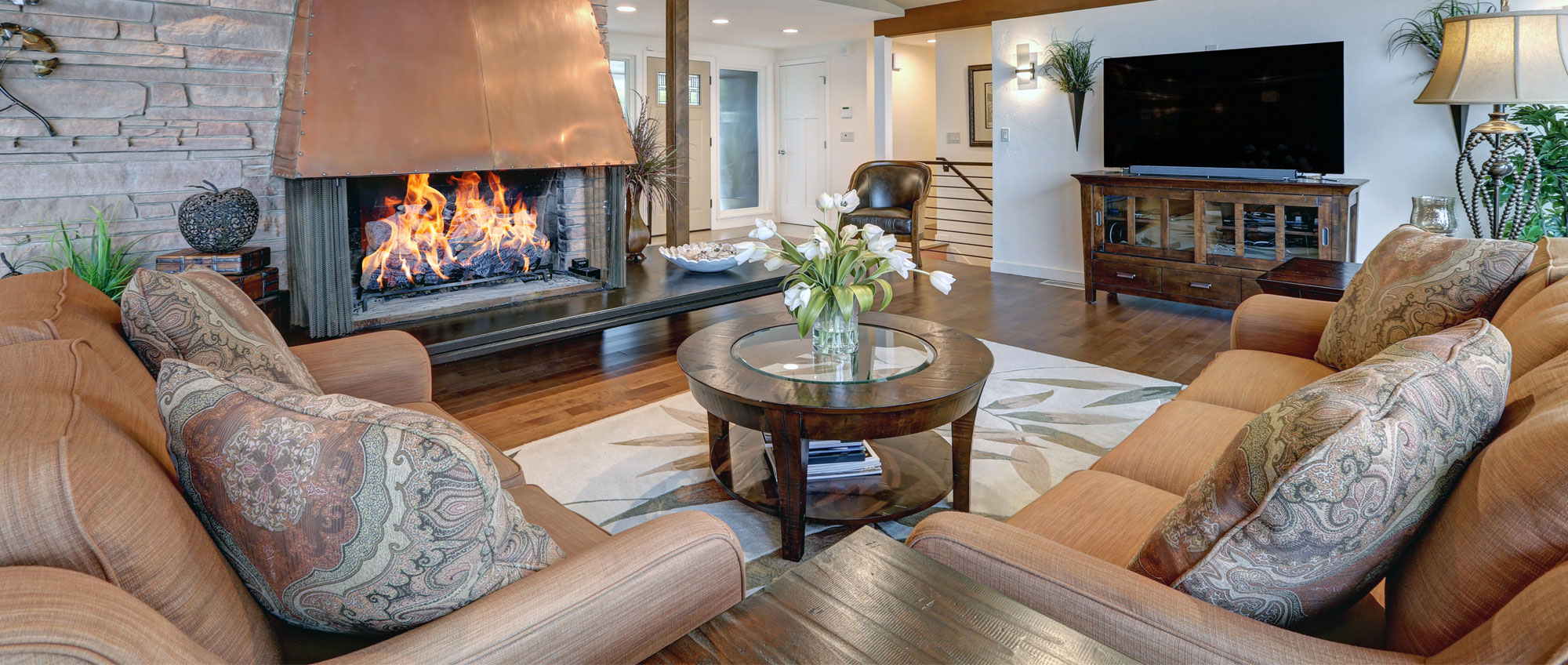10 Steps to Protect Your Home from Freezing Temperatures
1. Shut Off the Water to Outside SpigotsTo keep outdoor plumbing fixtures from freezing, disconnect and store any garden hoses. Then, shut off the water to your outdoor faucets; drain the lines; and insulate the hose bibs.
2. Check the Exterior Walls of Your Home for Holes
Even small holes where cable wires or phone lines enter your home can be an entry point for freezing air. Purchase a tube of foam insulation, and close them up. Then, use weather stripping to remedy any cracks around your doors.
3. Insulate. Then, Insulate Some More
Prevent your pipes from freezing by making sure your home has adequate insulation. This includes insulating your exterior walls, crawl space or basement, attic and – in many cases – the pipes themselves.
4. Set Your Faucets to Drip
If any of your indoor faucets are located on exterior walls that aren't adequately insulated, set your faucets to a slow drip whenever temperatures dip below freezing. For maximum effectiveness, make sure both the hot and cold lines are opened slightly (since both are at risk of freezing). Also consider leaving cabinet doors open, so your pipes will be warmed whenever your home's heating system kicks on.
5. Clear a Path to Your Main Water Shut Off
If a bunch of junk is blocking easy access to your main water shut valve off, rearrange your basement or garage, so it will be easily accessible in the event of a plumbing emergency. Then, make sure your shut off valve is in good working order. Cranking it all the way to the right should shut off all water to the house. If it's rusted open or only closes partially, replace the valve immediately.
Go a step further, and make sure everyone in your house knows where the shut off valve is located and how to use it to turn off the water, your shut off valve may be located outside at the meter.
6. Learn How to Shut Off Your Water at the Meter
Invest in a meter key (or keep a crescent wrench handy), so you'll be able to shut off water at the meter, should your shut off valve ever fail you. Then, practice turning the water on and off, so you'll know how it's done.
7. Keep Your Garage Door Closed
If your garage is attached to your home, minimize the time your garage door is open. This will help to keep cold air out of your house and protect your hot water heater and any other plumbing that you may have in the garage.
8. Keep Your Gutters Clean
Full gutters increase your chance of having ice form on your roof, and that's not something you want to mess with! Set aside some time to clean your gutters out before the freezing temperatures get here.
9. Keep Attic Vents and Soffits Clear
Proper attic ventilation is vital to preventing ice dams on your roof. Inspect your attic to make sure there's no insulation blocking your soffits or attic vents.
10. Keep Spare Batteries for Your Thermostat
Make sure you'll be able to keep your thermostat running continuously by keeping spare batteries on hand. Sometimes it's the small details that save the day.
2. Check the Exterior Walls of Your Home for Holes
Even small holes where cable wires or phone lines enter your home can be an entry point for freezing air. Purchase a tube of foam insulation, and close them up. Then, use weather stripping to remedy any cracks around your doors.
3. Insulate. Then, Insulate Some More
Prevent your pipes from freezing by making sure your home has adequate insulation. This includes insulating your exterior walls, crawl space or basement, attic and – in many cases – the pipes themselves.
4. Set Your Faucets to Drip
If any of your indoor faucets are located on exterior walls that aren't adequately insulated, set your faucets to a slow drip whenever temperatures dip below freezing. For maximum effectiveness, make sure both the hot and cold lines are opened slightly (since both are at risk of freezing). Also consider leaving cabinet doors open, so your pipes will be warmed whenever your home's heating system kicks on.
5. Clear a Path to Your Main Water Shut Off
If a bunch of junk is blocking easy access to your main water shut valve off, rearrange your basement or garage, so it will be easily accessible in the event of a plumbing emergency. Then, make sure your shut off valve is in good working order. Cranking it all the way to the right should shut off all water to the house. If it's rusted open or only closes partially, replace the valve immediately.
Go a step further, and make sure everyone in your house knows where the shut off valve is located and how to use it to turn off the water, your shut off valve may be located outside at the meter.
6. Learn How to Shut Off Your Water at the Meter
Invest in a meter key (or keep a crescent wrench handy), so you'll be able to shut off water at the meter, should your shut off valve ever fail you. Then, practice turning the water on and off, so you'll know how it's done.
7. Keep Your Garage Door Closed
If your garage is attached to your home, minimize the time your garage door is open. This will help to keep cold air out of your house and protect your hot water heater and any other plumbing that you may have in the garage.
8. Keep Your Gutters Clean
Full gutters increase your chance of having ice form on your roof, and that's not something you want to mess with! Set aside some time to clean your gutters out before the freezing temperatures get here.
9. Keep Attic Vents and Soffits Clear
Proper attic ventilation is vital to preventing ice dams on your roof. Inspect your attic to make sure there's no insulation blocking your soffits or attic vents.
10. Keep Spare Batteries for Your Thermostat
Make sure you'll be able to keep your thermostat running continuously by keeping spare batteries on hand. Sometimes it's the small details that save the day.



















